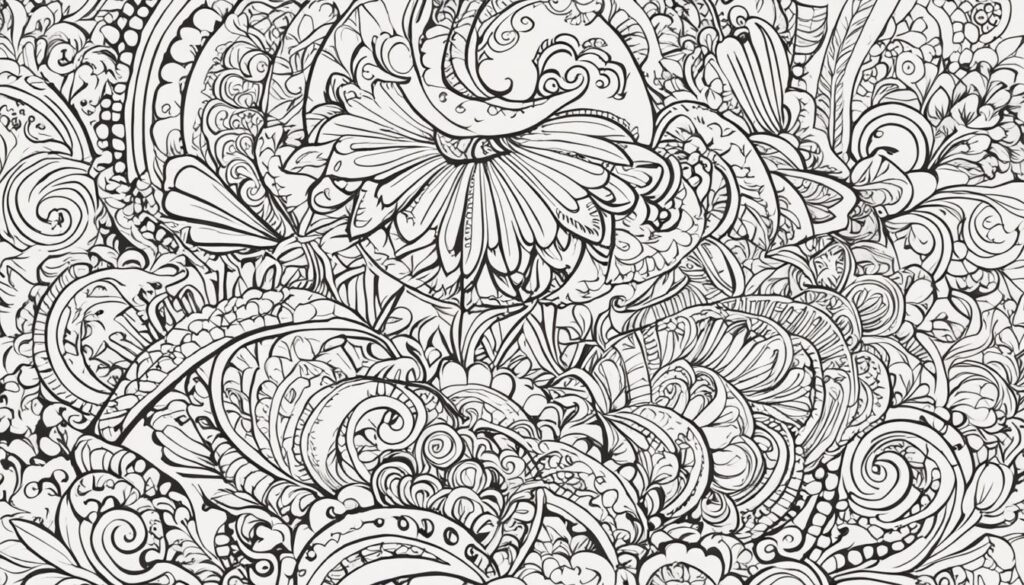Color psychology, the study of how colors impact human emotions and behavior, has fascinated researchers and marketers alike. The power of color to influence our thoughts and feelings is remarkable, and businesses have long recognized this and harnessed it to their advantage.
Colors have the ability to evoke specific responses in individuals. Warm colors like red and orange can stimulate energy and excitement, while cool colors like blue and green elicit a sense of calmness and trust. These emotional associations are not just happenstance; they have a profound impact on our behavior.
For businesses, understanding the psychology of color is crucial in effectively communicating their messages. Research from the Pantone Color Institute and ColorMatters reveals that snap judgments about products are often based on color alone. In fact, using colors that match a product’s personality can significantly increase brand recognition. A study by the University of Loyola, Maryland even found that using the right color in branding efforts can increase brand recognition by up to 87%.
Key Takeaways:
- The study of color psychology explores how colors can influence human emotions and behavior.
- Different colors evoke specific responses, such as red and orange stimulating energy and excitement, while blue and green elicit calmness and trust.
- Colors play a vital role in effective communication for businesses, as snap judgments about products are often based on color alone.
- Using colors that match a product’s personality can increase brand recognition.
- Research has shown that using the right color in branding efforts can boost brand recognition by up to 87%.
The Influence of Color in Marketing and Advertising
Colors play a significant role in branding, marketing, and advertising. The psychology of color is a powerful tool that businesses can leverage to influence consumer behavior and create memorable brand experiences. By strategically incorporating colors into advertisements and packaging, companies can evoke specific emotions, elicit desired responses, and shape consumer perceptions.
Studies show that color advertisements are read up to 42% more often than black-and-white ads, resulting in increased message retention and engagement (Institute for Color Research). Colors act as silent messengers, conveying emotional cues and influencing consumer decision-making processes. By understanding color psychology principles, marketers can tap into consumers’ subconscious desires and create powerful calls-to-action.
When selecting colors for advertising campaigns and branding efforts, it is essential to consider the target audience and their cultural context. Different colors have different meanings and symbolism in various cultures, and tailoring color choices to resonate with specific cultural values can enhance brand relevance and appeal. For example, the color red symbolizes luck and prosperity in Chinese culture, making it a popular choice for advertisements during festive seasons such as Chinese New Year.
Furthermore, specific colors have been found to evoke specific emotions and influence consumer behavior. For instance, red is often associated with excitement, passion, and urgency, making it an effective color for creating a sense of urgency in limited-time offers and sales promotions. On the other hand, blue is associated with trust, reliability, and calmness, making it an ideal color choice for brands focusing on building trust and credibility.
The Impact of Color on Consumer Behavior
Color can significantly impact consumer behavior and purchase decisions. Studies have shown that product color alone can affect how consumers perceive a product’s quality, value, and desirability (Impact of Color on Marketing). The use of specific colors in advertising and packaging can trigger emotional responses and influence consumers’ perceptions of a brand’s personality and attributes.
The Role of Color in Brand Recognition
Color plays a crucial role in establishing brand recognition. By consistently using specific colors across various touchpoints, such as logo design, website, packaging, and advertisements, brands can create a visual identity that consumers associate with their products or services. The immediate recognition of colors can help consumers quickly identify and connect with a brand, fostering trust and loyalty.
Strategic Use of Colors in Advertising
The strategic use of colors in advertising can enhance the effectiveness of marketing campaigns and attract consumer attention. Marketers can employ color psychology principles to create visually appealing and impactful advertisements that capture consumers’ interest and drive desired actions. For example, using contrasting colors for call-to-action buttons can make them stand out and increase click-through rates.
Color symbolism in marketing
Colors often have symbolic meanings that can be leveraged in marketing to create associations with specific qualities or emotions. Here are a few examples of color symbolism in marketing:
| Color | Symbolism | Examples |
|---|---|---|
| Red | Excitement, passion, urgency | McDonald’s, Coca-Cola |
| Green | Nature, freshness, growth | Whole Foods, Starbucks |
| Yellow | Happiness, optimism, energy | McDonald’s, Ikea |
| Blue | Trust, reliability, calmness | Facebook, IBM |
| Pink | Feminine, romantic, playfulness | Victoria’s Secret, Barbie |
Enhancing User Experience with Color Psychology in UI/UX Design
Color psychology plays a vital role in creating a compelling and immersive user interface (UI) and user experience (UX) design. The careful selection of colors can greatly impact website usability, user engagement, and conversion rates.
A study conducted by the Nielsen Norman Group revealed that using high-contrast colors for call-to-action buttons can increase click-through rates by an impressive 75%. This highlights the significant influence that color has on user behavior and the effectiveness of design elements in driving desired actions.
Colors in UI/UX design go beyond mere aesthetics. They serve as guides, leading users through their digital journeys and enhancing their overall experience. By strategically choosing colors that evoke the right emotional responses, designers can make interfaces more intuitive, user-friendly, and visually appealing. Every color choice in a user interface should have a purpose and align with the goals of the design.
To illustrate the impact of color psychology in UI/UX design, consider the following example:

| Color | Emotional Association | Usage in UI/UX Design |
|---|---|---|
| Blue | Calmness, trust | Used for backgrounds to create a sense of tranquility and reliability. |
| Red | Energy, urgency | Applied to call-to-action buttons to grab attention and create a sense of urgency. |
| Green | Nature, growth | Utilized for positive feedback elements and success messages to signal progress. |
| Yellow | Optimism, happiness | Used sparingly to highlight important information and draw attention. |
The table above demonstrates how different colors are associated with specific emotions and how they can be strategically employed in UI/UX design to evoke desired user responses. By understanding the psychological impact of color, designers can create interfaces that effectively communicate messages, engage users, and drive conversion rates.
Cross-Cultural Considerations and Color Symbolism
Colors have universal emotional associations, but their symbolism can vary significantly across different cultures. Businesses operating in diverse markets must be mindful of these cultural differences and adapt their color choices accordingly to avoid unintended negative associations. Let’s explore how cultural influences impact color perception and the symbolism of colors in different cultures.
Cultural Influences on Color Perception
Cultural factors play a significant role in shaping our perception of colors. Each culture has its own unique history, traditions, and associations with specific colors. These cultural influences can significantly impact how colors are perceived and understood by individuals in different societies.
For example, in Western cultures, the color white is often associated with purity, innocence, and weddings. However, in many Eastern cultures, white is associated with mourning and represents death and funerals. This stark contrast in color symbolism demonstrates the influence of cultural perspectives on the perception of colors.
Color Symbolism in Different Cultures
Colors hold deep symbolic meanings in various cultures around the world. Understanding these cultural color associations is crucial for businesses that operate internationally and seek to effectively communicate their brand messages. Let’s take a look at some examples of color symbolism in different cultures:
| Color | Western Symbolism | Eastern Symbolism | Middle Eastern Symbolism |
|---|---|---|---|
| Red | Passion, love, and excitement | Good luck and celebration | Anger and danger |
| Blue | Calmness and trust | Sadness and mourning | Protection and spirituality |
| Yellow | Happiness and optimism | Jealousy and betrayal | Wealth and prosperity |
This table showcases how colors can have contrasting symbolic meanings across different cultures. These variations highlight the importance of cultural sensitivity and research when selecting colors for international audiences.
Color Choices for International Audiences
When targeting international audiences, businesses must carefully consider the cultural connotations of colors in various regions. Conducting thorough research on the target audience’s cultural preferences can help businesses make informed color choices that resonate positively with the local population.
By understanding cross-cultural color symbolism, businesses can effectively communicate their brand messages, build trust, and avoid inadvertently alienating their international audience. Adapting color choices to align with cultural expectations demonstrates respect for local traditions and enhances brand perception.

Conclusion
Color psychology in marketing is a powerful tool that can drive business success. By understanding the emotional impact of colors, brands can create compelling marketing campaigns that resonate with their target audience. The right color choices can establish strong brand identities and leave a lasting impression on consumers.
Color plays a crucial role in influencing consumer behavior. By leveraging color psychology, businesses can strategically use colors to impact purchasing decisions, evoke specific emotions, and drive desired actions. Research has shown that using the right colors in branding efforts can significantly increase brand recognition, ultimately leading to increased sales and business growth.
Furthermore, color psychology extends beyond marketing campaigns and branding. It also plays a vital role in user interface and user experience design. Thoughtful color choices in UI/UX design can enhance website usability, engage users, and drive conversion rates. Moreover, considering cross-cultural color symbolism is essential for businesses operating in diverse markets.
In today’s competitive business landscape, leveraging the psychology of color is key to standing out and forging deeper connections with the audience. By understanding the importance of color choices and incorporating color psychology into marketing strategies, businesses can differentiate themselves, communicate their brand messages effectively, and ultimately achieve long-term success.
FAQ
What is color psychology?
Color psychology is the study of how colors can impact human emotions and behavior. It explores the specific responses that different colors evoke in individuals.
How does color impact behavior?
Different colors have different effects on behavior. Warm colors like red and orange stimulate energy and excitement, while cool colors like blue and green elicit a sense of calmness and trust.
How does color affect emotions?
Colors can evoke specific emotions in individuals. For example, red can symbolize passion or danger, while blue can evoke feelings of tranquility and peace.
What is the significance of color in marketing and advertising?
Color plays a significant role in marketing and advertising. By strategically incorporating colors into advertisements and packaging, businesses can influence consumers’ purchase decisions and emotional responses.
How does color impact user experience in UI/UX design?
The careful selection of colors in UI/UX design can have a significant impact on website usability, user engagement, and conversion rates. Colors in design serve as guides and can enhance the overall user experience.
Why is it important to consider cultural influences on color symbolism?
Colors can convey different meanings and emotions in different cultures. It is essential for businesses operating in diverse markets to be mindful of cultural sensitivities and adapt their color choices accordingly.
How can businesses leverage color psychology for success?
Understanding the emotional impact of colors enables businesses to create compelling marketing campaigns, establish strong brand identities, and deliver exceptional user experiences.
